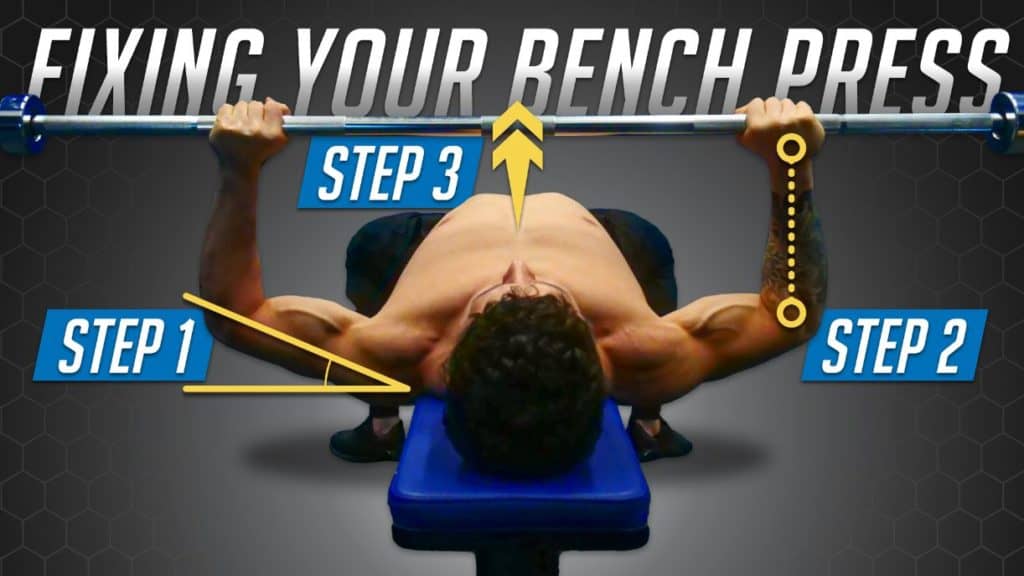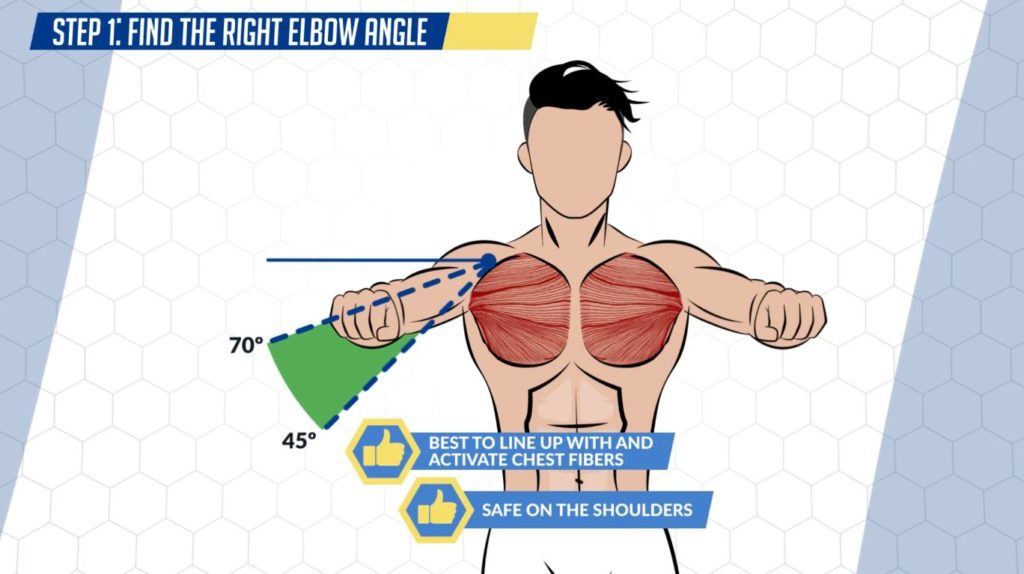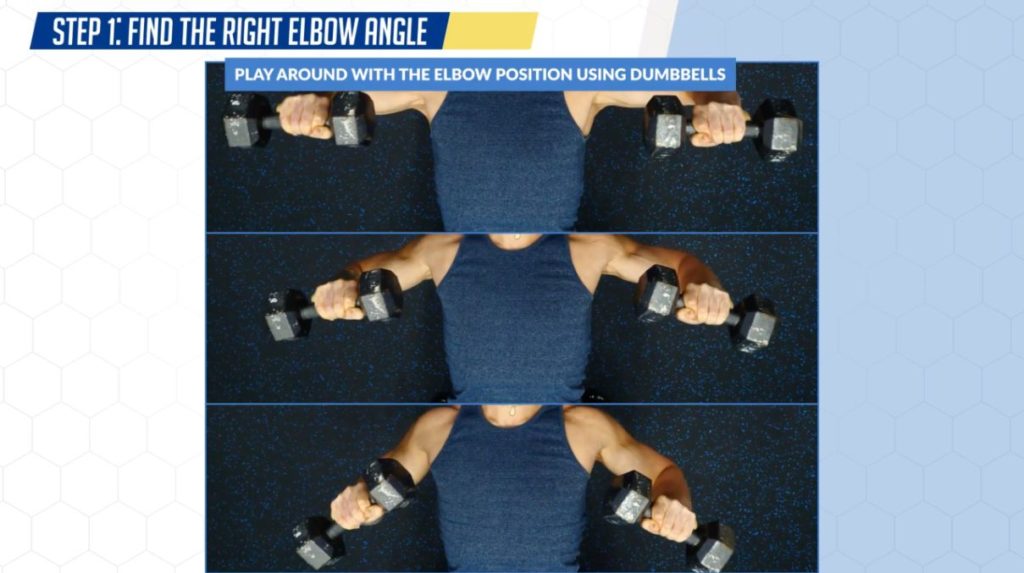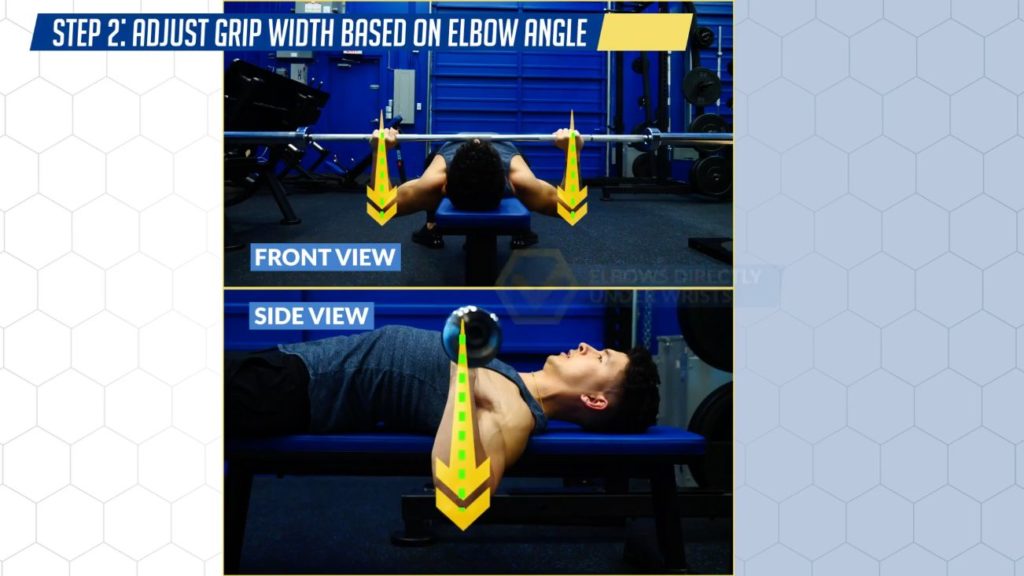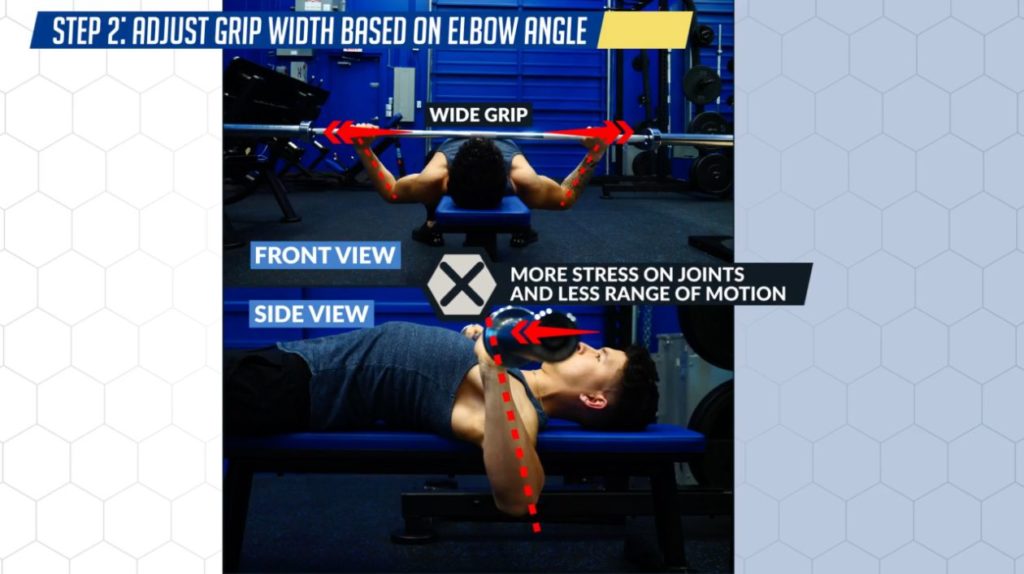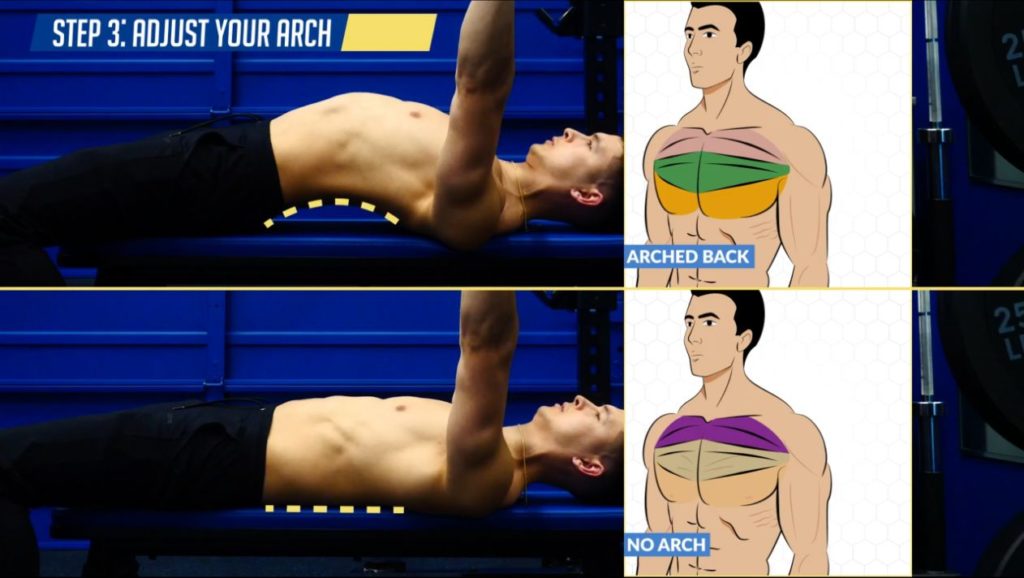How To Bench Press Based On Your Anatomy (Correct Your Form!)
Experiencing discomfort while performing the bench press? Or failing to even feel the chest working? Below, I explore how you can tweak your bench press form (based on your unique anatomy) for more gains. And fewer injuries.
The bench press is one of the most popular movements for the upper body. And at first glance, the correct bench press form seems fairly simple to perform. In reality, though, the picture is different. For many of us, bench press tends to be a movement that:
- Frequently causes discomfort in the shoulders, elbows, and wrists OR
- We have trouble feeling that it activates our chest
And most of these problems are due to our individual anatomy. See, the way that our bones are structured, plus the way our muscles are aligned affect how we should perform this movement in terms of things like:
- Grip width
- Elbow angle
- And so on
For example, a less experienced, taller individual with longer arms and a relatively flatter chest will have a bench press setup that looks quite different than a more experienced, shorter individual with shorter arms and a bigger well-developed chest. If one tried to copy the other simply because it felt “good” for the other person? They would likely end up with aches and pains over time. And not be stimulating their chest as well as they could be if they tweaked their bench press form based on their individual anatomy.
So, in this article, we’ll show you how to do a barbell bench press correctly (and properly!) in 3 easy steps.
Looking for a step-by-step program that accounts for your unique anatomy during all exercise execution - so you transform your physique in the safest AND most time-efficient manner? Then you've come to the right place:
Click the button below to take my analysis quiz to discover the best program for you:
↓
Should You Bench Press?
Now, before diving into each of the steps... I first want to pre-frame the article by emphasizing that the bench press is not absolutely necessary for you to do. For some individuals, it’s a great, effective movement at growing the chest and the overall upper body musculature. Whereas for others, it’s just not the best exercise for their structure. This is especially since the barbell forces you into a fixed hand position.
So, if your main goal is to build muscle? Just realize that you can accomplish this just as effectively with other exercises like the:
- Machine presses
- Dumbbells AND
- Even push-ups
...If properly progressed. The bench press isn’t the end all be all chest exercise. You don’t need to force yourself to do it if you find it’s just not a good fit for your body.
Tweaking Your Bench Press Form To Suit Your Anatomy
But let's hold up one minute before you actually make that decision. What you want to do is run through the following 3 steps. It's more likely than not that most of the discomfort and problems you experience with the bench press are likely due to a problem with your setup. Which then negatively affects your bench press form.
Step 1: Find The Right Elbow Angle
The first thing you need to do is determine the elbow angle that best activates your chest while minimizing any shoulder or elbow discomfort as you press. Accordingly, the way you should tweak your bench press form is by aligning your elbow angle with where the majority of your chest fibres run. Note that this will vary for each individual. For most people, an elbow angle of somewhere around 45 degrees to about 70 degrees will best line up with and activate their chest fibers when they press while being safest on the shoulders.
If you flare your elbows too much and go above this range to 90 degrees, for example, this has been shown to:
- Increase the risk of shoulder impingement AND
- Shift more of the tension away from the chest and onto the front delts
The same applies when you go below 45 degrees. Tucking the elbows too much will (again) shift more of the tension away from the chest and onto the front delts since they’ll now be better aligned to do work.
So, what I’d suggest, is just play around with this range to see what feels best. You can simply mimic a bench press arm. Focus on contracting your chest using different elbow angles to see what best activates most of your chest fibers. You can also experiment and play around with the elbow position.
You may find that a lower elbow angle will bias more of your upper chest fibers, whereas a more flared out elbow angle bias more of your mid and lower chest fibers. The key is to find the sweet spot that feels the best in terms of overall chest activation and comfort on your joints.
Can't find that sweet spot no matter how hard you try? Don't worry. The team here at BWS (along with myself) have successfully coached many like yourself - and are confident that we'll be able to help you master the proper bench press form. If you'd like more guidance:
Click the button below to find out more about the 3-on-1 coaching program:
↓
Step 2: Adjust Grip Width Based On Elbow Angle
Once you've determined roughly what elbow angle is best for you and your body, it’s now time to set up your grip width. This is the factor that'll enable you to actually use that elbow angle as you press. The way you do this is by ensuring that at the bottom of the press, your forearms are vertical with your elbows stacked directly under wrists - both from the front view and the side view.
If you use a grip that’s too narrow, your forearms will tend to angle inwards. This shifts more of the emphasis to your triceps rather than your chest. And, over time, can create quite a bit of stress in wrists, elbows, and shoulders.
On the other hand, if you use a grip that’s too wide, your forearms will tend to angle outwards. This can again create more stress on your joints while limiting the range of motion your chest goes through as you press.
Keep in mind that if in step 1, you chose an elbow angle that’s tucked a bit more to around 45 degrees, then you’ll have to use a more narrow grip in order to get your forearms lined up properly. Whereas if you chose a more flared out elbow angle step 1, then you’ll need to use a slightly wider grip.
So play around with different grip widths. Take a look at your forearms at the bottom position, and record yourself from the front and side view to double check that they’re aligned. Once you nail this down, you should notice significantly more tension placed on your chest rather than on other muscle groups (e.g. shoulders or triceps).
Step 3: Adjust The Arch Of Your Bench Press Form
Lastly, as you press, you want to maintain at least some degree of an arch in your upper back. This is in contrast to keeping it completely flat against the bench. This helps activate more of the chest, specifically the mid and lower fibers, by putting them in a better-aligned position to do work while also keeping your shoulders in a safer position.
As for how much of an arch you should use with your bench press form? This will depend on:
- Your individual chest fibers
- The structure of your sternum AND
- The overall size of your chest
Generally, most people will get the best activation somewhere between an arch that isn’t completely flat against the bench but also isn’t as exaggerated as a powerlifter’s arch, for example. So, again with this step, play around with it. Eventually, you should be able to find the optimal position where you feel the most activation in your chest with minimal discomfort.
And there you have it. Go through this step-by-step process, experiment with it, and find what bench press form works best for you and your body. It won't be long before you start experiencing significant improvements in your bench press numbers. If you want to build muscle as effectively as possible while minimizing your risk of injury, then you need to not only pick the right exercises but also ensure that you set up and execute them in the right way and in a way that’s based on your individual structure.
For a step-by-step program that does just that for you, by showing you exactly how to train and how to eat week after week so that you can transform your specific body as fast as scientifically possible, then:
Click the button below to take my analysis quiz to discover the best program for you:
↓






